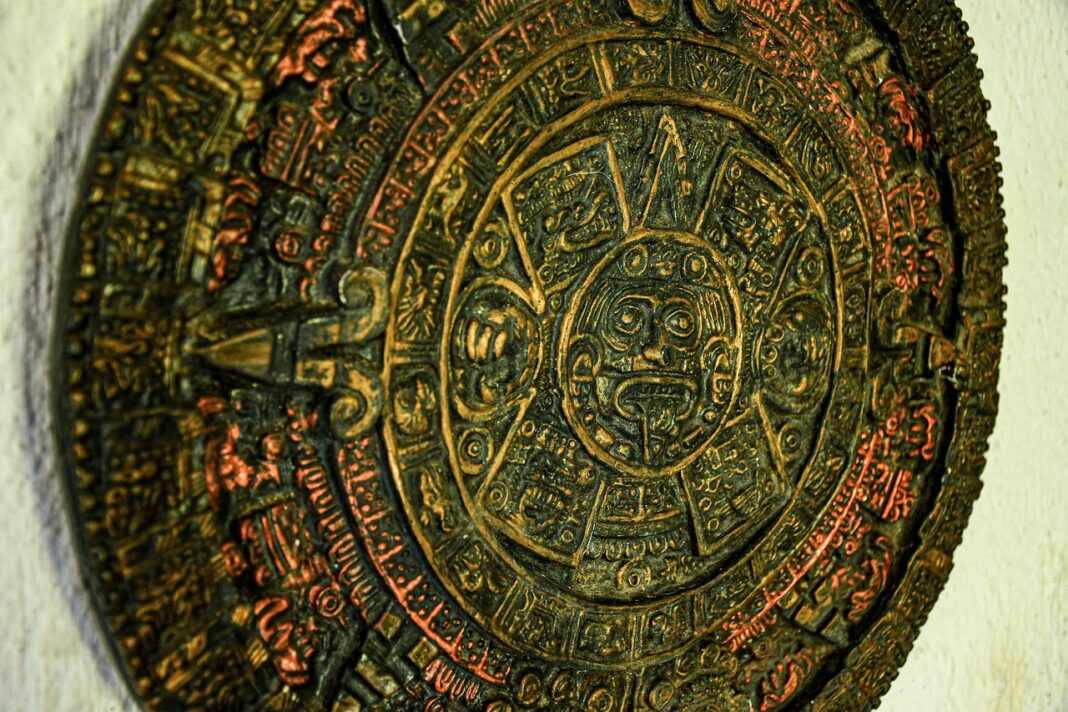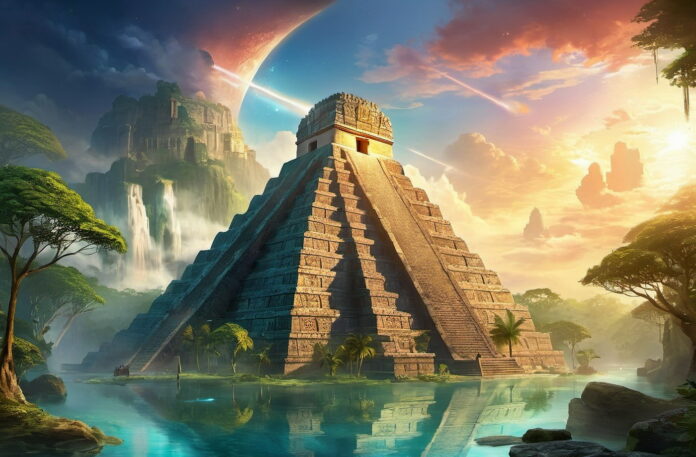The Mayan Calendar is a mysterious artifact that has reached us through the veil of centuries. However, calling the date and event counting system, developed (as historians believe) by the ancient Mayan people, simply a calendar would be inaccurate and simplistic. This is not just an ancient calendar but a complex scientific creation, concealing predictions about the future.
Moreover, there are theories suggesting that it was not the Maya people who invented it but rather some Ancient Advanced Civilization (AAC) that existed even before the Maya. According to other assumptions, the invention could have been made by representatives of extraterrestrial civilizations.
Finding out the truth about its origins seems impossible now, but the treasure trove of mysteries and possible instructions to descendants it holds is worthy of detailed study.
Few people on the planet are unaware of the “end of the world” predicted for 2012. Books, disaster movies, scientific studies—everyone tried to draw parallels between the impending doom and the end of the cycle in 3224 according to the Mayan calendar.
There’s also some good news. Within the “long” reckoning of years by Maya standards, there is a dizzying 26,000-year cycle. The conclusion is obvious. Earth is unlikely to face universal catastrophe. No strong upheavals are foreseen in the near future or in the long term.
The wonders related to the trio of these three systems forming the Mayan calendar do not end there. The external appearance—a solid, stone-like circle carefully divided into sectors or particles.
Experts in “space science” immediately notice from the image that the ancient Mayan Indians possessed excellent knowledge of astronomical phenomena. But what stirs the imagination is:
- They were able to calculate with meticulous precision that there are exactly 365.242 days in a solar year.
- Such “investigation” would have taken them 10,000 years, but the civilization that nearly vanished had existed for 3,500 years.
- Other discoveries are directly related to the true state of affairs in the lives of large and small celestial bodies, although they had no sophisticated cosmic technology at their disposal.
- Even during pre-Columbian times, the Indians unmistakably identified the occurrence of all solar and lunar eclipses.
- An unknown “herald” through their mouths and notes in the Mayan calendar warns humanity about wars on a planetary scale, the emergence and rise of such phenomena as international terrorism.
- Under the apocalypse, perhaps they meant not a complete fiasco and the shattering of hopes for the well-being of the world, but the idea and acceptance of such values as spiritual development at the expense of material wealth.
It is genuinely unknown what was the real cause of the downfall of the Mayan civilization. One assumption is based on the myth of terrible natural disasters that struck the cities and settlements of the wise people. Another part of the scientists adheres to the opinion that the tribes fought too much for power and self-destructed in civil wars.
One thing remains unchanged: the level of development of the inhabitants of the planet, regardless of the region they lived in at that time, could not correspond to the level of knowledge in mathematics and astronomy possessed by the enigmatic Mayan tribes.
Who acted as their teacher, mentor, guru, coach—remains to be deciphered by their descendants, but so far they have not made much progress on this path. Therefore, the version that the Mayan civilization could have been that very “contactee” with the forces and intelligence of the Universe is alive.
Who knows, perhaps it was destined for them to teach Earth innovations from space, so it has the right to exist. So far, no one has been able to prove otherwise and find another explanation for the incredible abilities of the ancient Indians.

A story about the unusual Mayan calendar would be incomplete without touching on the history of this ancient and very wise people among the Indians. A brief overview of its still largely unsolved past shows:
- The pinnacle of development for this representative of Mesoamerican civilizations was reached in 250-900 AD.
- It experienced ups and downs, but each time, like a phoenix, it rose from the ashes.
- It managed to leave a bright mark on the planet in such sciences as astronomy, mathematics, agriculture, enriched architectural art, and invented intricate writing systems.
- Yielding to the cruel fate of fate, intertwined with the intervention of European conquistadors, it practically perished as an independent entity 1000 years ago, completing its decline in the 16th century.
- It has a handful of fervent followers trying to preserve the heritage in its authentic state in the southern states of Mexico, Guatemala, Honduras, Belize, and El Salvador.
- It continues to pique the curiosity of scientists and tourists alike, embarking on endless pilgrimages to the former possessions of the mysterious civilization.
- The Mayan calendar was recognized and used not only by the Mayan people themselves but also by other inhabitants of Central America: the Mazatecs, Aztecs, Toltecs, and even on other continents, it was not ignored.
In the focus of the attention of the authors of the Mayan calendar were 3 formats of reckoning years:
1. Closer in spirit and more understandable to the inhabitants of the 21st century, the civil calendar Haab, designed to synchronize the timing of agricultural work, with a cycle of 365 days, also known as the “solar calendar.”
From the familiar counting of months, the Mayan view of agricultural reality is drastically different. In their concept, a year does not consist of 12 months but 19, with 18 of them as twin brothers consisting of 20 days each, while one month is a “little one,” ending in just 5 days.
2. A certain ritual, partly religious, and partly mystical calendar Tzolk’in, in some ways, will cause a “brain explosion” for present generations. Its cycle is short—260 days, and all of them have “proper names.”
The Tzolk’in system of concepts, according to a certain, hitherto unknown mathematical “formula,” is divided into periods, which in turn consist of 20 or 13 days. In addition to the clear naming of each date, it also has a mysterious symbol—a message from the mighty, scorching sun expressed in a seal.
The third and most mysterious calendar, named the “Long Count Calendar,” counts not months but years, or even millennia, as its unit of measurement.
The Mayan calendar lives on, capturing close attention, accumulating new speculations and conjectures, seeing the future “through and through,” and attempting to warn of impending disasters for those who will heed the ancient wisdom. The key is to interpret all of this correctly, and many disasters can be avoided.
